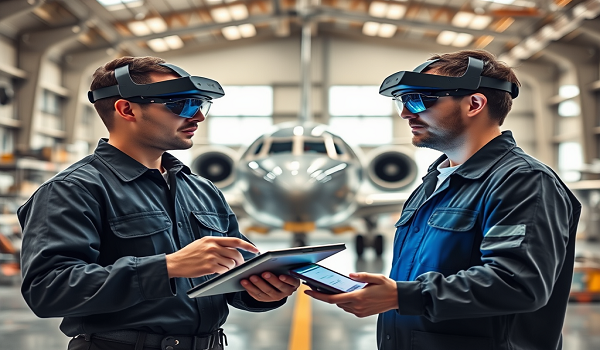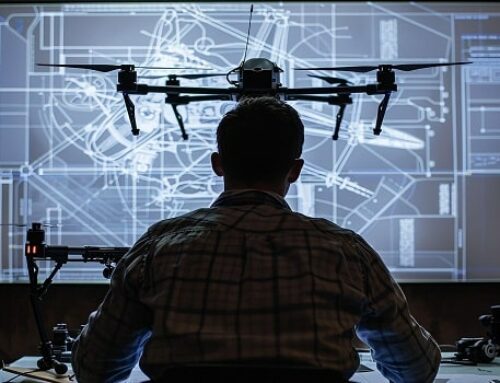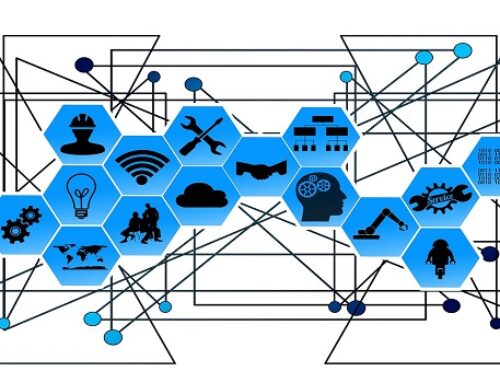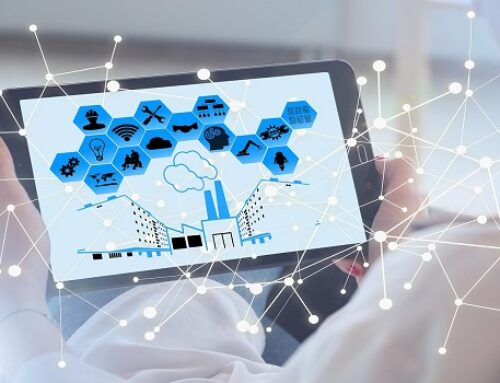Did you know that 30% of aerospace companies risk disappearing by 2030? Indeed, aerospace digital transformation is reshaping the rules of the game. At first glance, the figures are staggering. In fact, the aerospace digitalization market will reach €300 billion in 2025. Moreover, industry leaders are investing massively in this revolution. But why such enthusiasm? First and foremost, the gains are spectacular:
- 25% reduction in operational costs
- 65% fewer maintenance errors
- 40% productivity gain
- Average ROI of 300% over 3 years
In this regard, a McKinsey study reveals an unequivocal finding. Indeed, 87% of companies that delay digitalization lose market share.

Key takeaways regarding aerospace digital transformation:
- Aerospace digital transformation generates 30% productivity gains
- Digital instructions reduce maintenance errors by 65%
- 93% of aerospace leaders invest in digitalization
- AI predicts failures 48 hours before occurrence
- Average ROI reaches 300% over 3 years
1. Technologies Revolutionizing Aerospace in 2025
The digital transformation of the aerospace sector relies on advanced technologies. Each optimizes operations, enhances safety, and reduces costs.
Let’s take a closer look at the tools redefining industry standards.
1.1. AI and Big Data: The New Co-pilots
Artificial intelligence no longer just assists pilots. It now pilots data.
- Real-time analysis: AI processes millions of data points from flight sensors. Result: immediate anomaly detection.
- Predictive maintenance: It anticipates failures up to 48 hours in advance, avoiding costly groundings.
- Performance optimization: Safran, for example, reduced its unplanned shutdowns by 30% thanks to these technologies.
- Economic gain: On average, predictive maintenance saves €500,000 per year per aircraft.
1.2. Augmented Reality: Seeing the Invisible
Augmented reality (AR) transforms technicians’ daily work in the field.
- Real-time displayed instructions: Through connected glasses, guidelines appear in their field of vision.
- Immediate productivity: Hands remain free, gestures are faster.
- Accelerated training: Daher trained 200 technicians 40% faster by integrating AR into its programs.
- Fewer errors: Procedural mistakes dropped by 65%, proving the effectiveness of this immersive technology.
2. Impact on Daily Operations
Digitalization doesn’t just introduce high-tech tools. It reinvents daily practices. Less paper, fewer errors, more fluidity. Result: time and efficiency gains at all levels.
2.1. Next-Generation Work Instructions
Gone are the binders forgotten on shelves. Technical procedures are now digital, interactive, and always up-to-date.
- Instant access: With a few clicks, a technician finds the right procedure sheet, even in the field.
- Real-time updates: Any modification is immediately visible to the entire team.
- Productivity gain: At Air France, a maintenance agent saves 45 minutes per day through mobile tablet consultation.
- Fewer errors: Obsolete versions disappear, limiting incorrect operations.
2.2. Accelerated Team Training
New technologies also change how we learn a trade. Virtual reality becomes a strategic asset for manufacturers.
- Risk-free training: Technicians practice in immersive environments before working on actual aircraft.
- Faster learning: An apprentice masters a procedure in 3 sessions instead of 10, with better retention rates.
- Safety gains: Fewer direct interventions during the learning phase, therefore fewer potential accidents.
3. Human Resources at the Heart of Aerospace Digital Transformation
The success of digital transformation doesn’t depend solely on technology. It primarily relies on the men and women who drive it daily. Without their commitment, no tool produces lasting results.

3.1. Change Management: A Decisive Factor
Technology disrupts habits. This is why change management support is essential.
- Involve from the start: Teams must understand objectives and be actors in the project.
- Communicate clearly: Explain benefits, address doubts, value feedback.
- Create a climate of trust: The more serene the environment, the stronger the buy-in.
A successful transformation begins with an engaged team.
3.2. Skills Development: Valorizing Talent
Digitalization is an opportunity for operators to develop their skills.
- Progressive learning of digital tools
- Increased autonomy in task execution
- Valorization of know-how through clear and visual support materials
Result: employees become more versatile, more efficient, and more confident.
4. Supply Chain Impact
Digital transformation doesn’t stop at production workshops. It also reinvents logistics and supplier relationships.
Result: more transparency, reactivity, and reliability throughout the supply chain.
4.1. Total Traceability: Every Component Under Control
With blockchain, no data is lost or falsified.
- Every step is recorded: from manufacturing to installation, everything is time-stamped and verifiable.
- Reliability gain: delivery or assembly errors are drastically reduced.
- Enhanced security: all data is protected against unauthorized modifications.
A traceable supply chain is a safer and more efficient chain.
4.2. Supplier Collaboration: A Connected Ecosystem
Digital platforms facilitate network collaboration. Suppliers, subcontractors, and prime contractors share a common vision.
- Real-time information: no more need to exchange hundreds of emails or obsolete files.
- Reduced lead times: each actor anticipates needs and adjusts faster.
- Fewer disputes: shared data means less ambiguity and more efficiency.
5. How to Successfully Achieve Digital Transformation?
Successful digitalization doesn’t depend solely on tools. The human factor, methodology, and pace play a central role. Here are the keys to advancing efficiently.
5.1. Key Success Steps
Effective digital transformation follows clear logic. You must lay the right foundations, involve teams, and measure results.
- 1. Digitize work instructions This is the first performance lever. Digital procedures guarantee clarity, traceability, and quick access.
- 2. Progressively train employees Change happens better in stages. Targeted and regular sessions enable sustainable skill development.
- 3. Measure gains Time saved, error reduction, team satisfaction: track concrete indicators to adjust your strategy.
5.2. Pitfalls to Avoid
Haste and lack of support are the two major enemies of success.
- Digitizing everything at once: this creates confusion, even rejection. Prioritize high-impact areas.
- Forgetting training: a poorly understood tool is an unused tool. Supporting users is essential.
- Underestimating change management: explain benefits, involve teams, valorize successes.
6. The Picomto Solution: Your Digital Partner
Picomto doesn’t provide just a simple tool. We support you through each step of your digital transformation, with a solution designed for the aerospace industry.
- Adapted to your field constraints
- Compatible with your existing systems
- Designed for technicians, quality managers, and methods teams
Every feature is designed to accelerate performance improvement without burdening processes.
Conclusion
Ultimately, aerospace digital transformation is redefining industry standards. The figures speak for themselves. Digitalized companies reduce their costs by 25% and increase their productivity by 30%.
To date, the observation is clear. Leaders who invest in digital gain a decisive advantage. Indeed, their teams gain in efficiency and precision. The good news? This transformation is accessible to all companies. In fact, solutions like Picomto adapt to your needs and pace.
The future of aerospace will be digital, connected, and intelligent. The only remaining question is: when will you begin your transformation?
Do you want to succeed in your aerospace digital transformation?
Picomto supports your transition to Industry 4.0!
FAQ
1. What are the 4 types of digital transformation?
Digital transformation includes:
- Operational process transformation
- Customer experience transformation
- Business model transformation
- Corporate cultural transformation
2. What are the 3 pillars of digital transformation?
The essential pillars are:
- Employee experience (tools and work methods)
- Technology (AI, IoT, Cloud)
- Corporate culture (innovation and agility)
3. What is digital transformation in aviation?
Aerospace digital transformation modernizes:
- Maintenance procedures
- Team training
- Quality management
- Daily operations
4. What are the 4 major technologies of the digital era?
The key technologies are:
- Artificial Intelligence and Machine Learning
- Internet of Things (IoT)
- Cloud Computing
- Augmented/Virtual Reality
5. What is the main objective of digitalization?
Digitalization aims to:
- Increase productivity (+30%)
- Reduce errors (-65%)
- Improve quality
- Optimize costs (-25%)






Leave A Comment